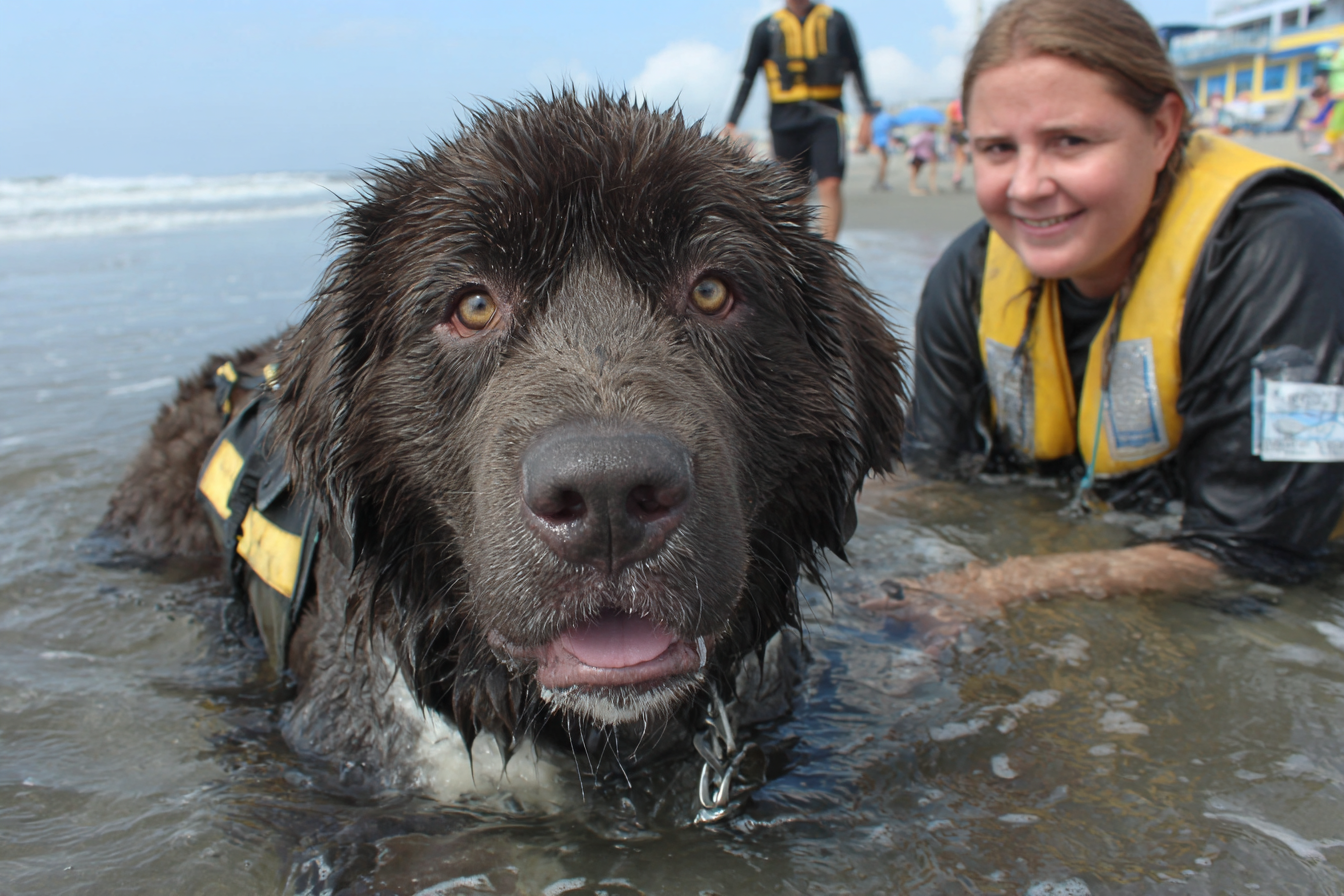Newfoundland dogs possess a remarkable reputation for their water rescue abilities, making them true heroes of aquatic life-saving. With a combination of natural instincts, specialized anatomy, and a rich history intertwined with maritime rescue operations, these gentle giants stand out as some of the most capable and reliable lifeguards in the canine world. Whether it’s braving cold waters or towing struggling swimmers back to shore, Newfoundland dogs continue to inspire awe and admiration. Let’s dive into the fascinating world of these extraordinary water rescuers and learn what makes them natural-born saviors.
Natural Instincts and Anatomy for Swimming
One of the reasons Newfoundland dogs excel in water rescue is their innate affinity for swimming. This breed has been gifted with unique physical characteristics that make them exceptional swimmers:
- Webbed Feet: Unlike many dogs, Newfoundlands have webbing between their toes, which acts like natural paddles. This adaptation provides superior propulsion, enabling them to move efficiently through water.
- Water-Resistant Double Coat: Their thick, oily double coat repels water while insulating them against cold temperatures, allowing them to swim comfortably in frigid conditions.
- Powerful Muscles and Large Size: These dogs are robust and muscular, which gives them the strength to tow humans and heavy objects in water.
- Strong, Wide Chest: This enhances lung capacity and stamina for long swimming sessions.
- Natural Swimmers: Many Newfoundland dogs instinctively take to water without needing extensive encouragement, often displaying a calm and steady swimming style.
All these physical traits combine with instincts that encourage them to enter water easily and assist swimmers in distress, sometimes without prior training.
History of Water Rescue Work
The Newfoundland breed’s water rescue capabilities have been recognized for centuries, tracing back to their origins in the Canadian province of Newfoundland and Labrador. Originally bred as working dogs to assist fishermen, these dogs were invaluable partners in various water-related tasks.
Fishermen relied on Newfoundlands to haul nets, carry loads, and most importantly, rescue people who fell overboard. Their strength and swimming skills made them essential in emergencies where quick action could mean the difference between life and death.
Over time, the breed’s proficiency in water rescue was officially acknowledged, and Newfoundland dogs were employed in formal lifesaving roles, including work with coast guard teams and water patrol units. Their reputation has been cemented by countless rescues in cold, rough waters, proving the breed’s durability and commitment to saving lives.
Training Methods for Rescue Tasks
While Newfoundlands have a natural aptitude for water rescue, formal training is essential to harness their skills safely and effectively. Training typically focuses on building obedience, strength, and specific rescue techniques. Here’s how the process generally unfolds:
- Basic Obedience Training: Before rescue training begins, dogs must respond reliably to commands such as “come,” “stay,” and “heel.” A disciplined dog is easier to control during emergencies.
- Water Familiarization: Although Newfoundlands often love the water, training ensures they can navigate unpredictable currents and rough conditions safely.
- Rescue Techniques: Dogs learn specialized behaviors like swimming with a life preserver, towing a person to shore, and following directions for targeted rescues.
- Use of Rescue Equipment: Rescue vests, harnesses, and ropes are introduced early on to familiarize the dog with gear they might encounter during real-life rescues.
- Simulated Rescue Scenarios: Trainers create realistic situations to build confidence and demonstrate the dog’s ability to respond under pressure.
Consistent positive reinforcement and patience are key in training Newfoundland dogs for water rescue, ensuring their natural willingness to help is enhanced rather than forced.
Famous Rescue Stories
The bravery and skill of Newfoundland dogs in water rescues have been immortalized in various heartwarming and heroic stories worldwide. Here are a few notable examples:
- Seaman’s Heroic Rescue: In the 1800s, a Newfoundland dog named Seaman famously rescued several fishermen off the coast of Newfoundland during a violent storm, towing them one by one to safety amid icy waves.
- Boundary Bay Lifesaver: A Newfoundland dog named Gus regularly assisted lifeguards in British Columbia, Canada, saving multiple swimmers caught in dangerous currents.
- Modern-Day Heroics: Today, Newfoundlands are still active in water safety roles, including participating in competitive water rescue trials where their skills are demonstrated and refined.
These inspiring tales highlight the loyalty, intelligence, and courage embedded in the Newfoundland breed, reinforcing their status as lifesaving companions.
Why They Excel in Water Safety
Several factors explain why Newfoundland dogs stand apart from many other breeds in water safety:
- Temperament: Their calm and gentle disposition allows them to act steadily during emergencies, avoiding panic that could complicate rescues.
- Endurance: Their physical strength allows them to swim for long distances without tiring.
- Affection and Loyalty: Newfoundlands are deeply bonded to humans, which fuels their instinct to help, even in life-threatening situations.
- Adaptability to Cold Water: Their thick coats and body fat enable them to withstand frigid temperature, making them dependable in harsh water conditions.
- Intelligence and Trainability: These dogs catch on quickly to commands and situations, a crucial trait for lifesaving work.
Together, these attributes form an ideal package for water rescue and safety.
How Owners Can Support This Trait
Owners of Newfoundland dogs who wish to nurture their water rescue abilities can take several proactive steps:
- Early Water Exposure: Introduce puppies to water gently and regularly to build their comfort and confidence.
- Consistent Training: Maintain obedience training and gradually introduce water-based skills with professional guidance.
- Health and Fitness: Keep the dog in optimal physical condition to ensure endurance and strength for swimming.
- Provide Appropriate Gear: Use life jackets designed for dogs during training or water outings to build familiarity with rescue equipment.
- Engage in Water Activities: Swimming not only strengthens muscles but also helps satisfy their natural instincts and keeps them mentally stimulated.
Owners who actively encourage these behaviors help preserve the breed’s unique heritage and promote safe water adventures for both dog and human.
Appreciating the Lifesaving Legacy of Newfoundlands
The Newfoundland dog’s incredible water rescue abilities are no accident—they are the result of centuries of natural adaptation, selective breeding, and dedicated training. Their webbed feet, strength, and courageous heart combine to create a canine companion that is both a gentle friend and a fearless lifeguard.
Whether it’s a historic rescue at sea, a modern lifesaving mission, or a playful swim at the lake, Newfoundland dogs continue to demonstrate why they are unmatched in water safety. For owners and enthusiasts alike, these dogs symbolize the perfect harmony between nature and nurture, a bond forged in the water and tested in life-saving action.







